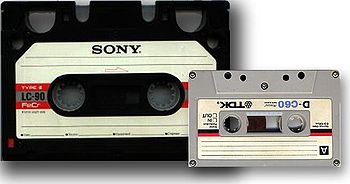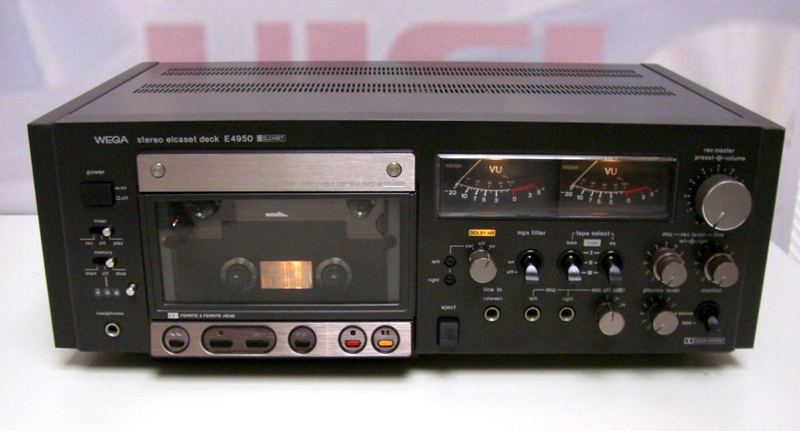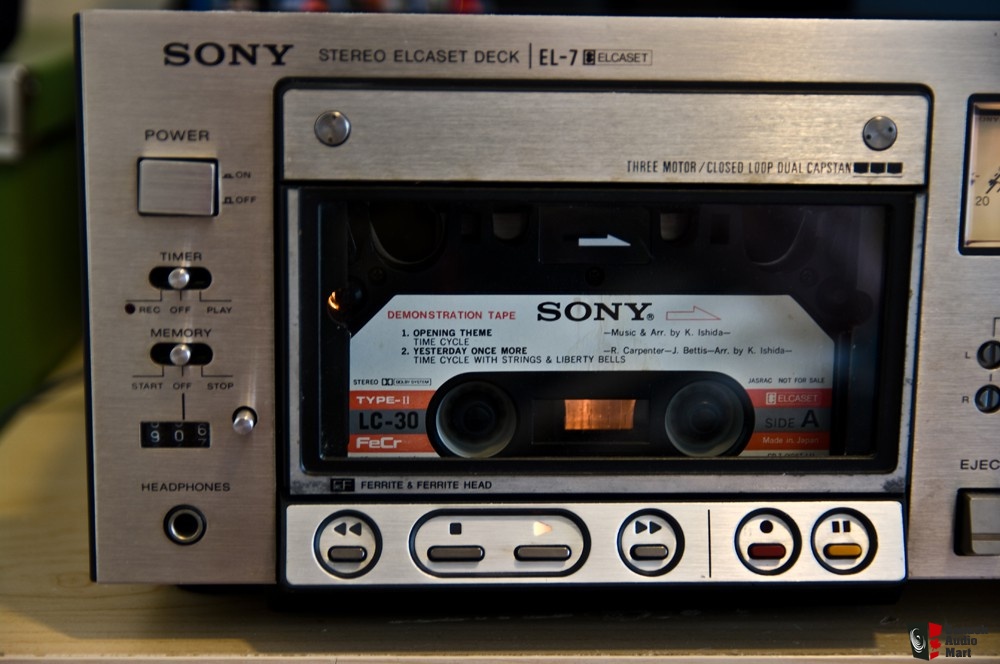Elcaset: giant audio tapes of the past from Japan and forgotten audio format
 Long before the tape cassette formats appeared on the Digital Compact Cassette and Digital Audio Tape tapes in Japan, a cassette tape format appeared, called Elcaset. It was proposed by Sony specialists in 1976. The Japanese claimed that a new type of cassette allows you to record and play music in a higher quality than a regular compact cassette.
Long before the tape cassette formats appeared on the Digital Compact Cassette and Digital Audio Tape tapes in Japan, a cassette tape format appeared, called Elcaset. It was proposed by Sony specialists in 1976. The Japanese claimed that a new type of cassette allows you to record and play music in a higher quality than a regular compact cassette.Elcaset has become a relatively popular format for audio cassettes in Japan, then it was learned all over the world, but quickly forgotten. After that, for some time, giant audio tapes were used in Finland, but they also soon stopped using them. Who created the Elcaset format and why was it quickly forgotten?
For its time, compact cassettes ensured an acceptable quality of sound recording and reproduction. But in the 70s of the last century, many lovers of high-quality sound were convinced that a compact cassette could not become both a quality and mass alternative to reels and reel tape recorders. The drawbacks of the cassettes were considered to be a high level of noise, a relatively narrow range of reproducible frequencies, and a low quality cassette tape drive mechanism.

')
40 years ago, three large Japanese companies engaged in the development of electronic devices, agreed to work together to solve the problem of poor quality music on compact cassettes. These three companies are Panasonic, Sony and Teac. The combined team of experts decided to use a magnetic tape format whose width is equal to the width of the magnetic tape in reel-to-reel tape recorders — 6.35 mm. It was decided to double the speed of drawing the tape in comparison with the cassette technique - up to 9.53 cm / s. The size of the cassette of the new type was 152 × 106 × 18 mm.
A distinctive feature of audio cassette Elcaset was not only the size. Unlike a compact cassette, the tape of which is always inside the case, the Elcaset tape pulled out a special mechanism outside the case. This principle is also used in a video cassette recorder. Such a solution made it possible to use the time-tested head designs that were previously used in reel tape recorders in tape recorders for the Elcaset standard. In addition, the drive shaft was on the outside of the film, and the pressure roller on the inside. The Elcaset used magnetic tapes like Normal or bilayer Fe-Cr.

Due to the special features of its design, the Elcaset cassette made it possible to reproduce high-quality sound with an upper frequency range of 25,000 Hz. The lower frequency range was 15 Hz. The compact cassette provided a maximum sound frequency of 16,000 Hz. Elcaset format cassettes made it possible to reduce the level of third-party noise when playing a recording. Sony representatives have argued that at mid frequencies, the Elcaset dynamic range exceeds the compact cassette by 10-15 decibels.
The best tape recorders for working with Elcaset contained three motors, three magnetic heads for recording, reproducing and erasing sound on a magnetic tape. Also, these recorders were equipped with a remote control.
Sony, Teac, and Panasonic had their own models of tape decks. Sony also produced a portable model EL-D8, which was placed in the bag. A little later, Hitachi joined the top three manufacturers of Elcaset audio systems. Systems started selling well and getting great reviews. The device cost from 500 to 1000 US dollars. It was comparable to the flagship models of decks produced to work with compact cassettes.
But sales of Elcaset format devices quickly faded away. The reason - in the same 1976, when the first devices of the new format appeared, compact cassettes with a film coated with chromium oxide (CrO 2 ) were introduced. These cassettes provided a much higher quality sound reproduction than conventional compact cassettes. They could be used in standard tape recorders. The CrO 2 cassette cost 40% more than usual, but music lovers didn’t care. It was more profitable to buy a more expensive cassette that could be listened to on an ordinary inexpensive tape recorder than a new tape recorder with support for the Elcaset standard.

In tape recorders with compact cassettes, manufacturers began to use Dolby B single-band compander systems. They provided an increase in the signal-to-noise ratio up to 10 dB at high frequencies.
Another problem for Elcaset cassettes is Hi-Fi compact tape players made by the Japanese company Nakamichi. Since 1973, the company has produced models of Dec 1000 and 700, which quickly became the best in the world . Nakamichi decks were equipped with a two-shaft tape drive mechanism, a through path with separate recording and playback heads, and a noise reduction system. Models 1000 and 700 had the standard means of calibrating the bias, setting the nominal level of the recording and the azimuth of the installation angle of the heads. The already excellent sound of the music played by the Nakamichi tape recorder could be further improved in the case of using a cassette with CrO 2 tape.
Inexpensive compact tape players began to appear on the market, which on the chrome tape provided the same or better sound than Elcaset cassettes. The market began to react, the number of sales of Elcaset-devices began to fall. Ordinary buyers, not audiophiles, completely stopped buying Elcaset systems, which reduced the already not too high level of sales of these devices.
The assortment of recordings coming out on Elcaset tapes has also been reduced. A listener would like to purchase a popular album on Elcaset, but only regular compact cassettes with these tunes were on sale. And not every music lover was ready to ask popular tunes from friends and record them for himself.
In the same 1976, some popular artists began to release their recordings in mono format. So did, for example, the group Dr.Feelgood. The first ten studio recordings of the group were in mono format. Fans of music have become interested in new genres (punk rock, for example), rather than technical innovations.
All this led to the fact that in 1979 the release of devices and cassettes Elcaset format was discontinued. Japanese manufacturers have several thousand decks left (models EL-7 and EL-5), which were auctioned off by the Finnish wholesale company Hirvox. All this equipment (about 2000 Elcaset systems) was sold in Finland at prices ranging from $ 140 to $ 230, with 25 blank tapes attached to the decks. For this reason, the format has existed in Finland for some time. Elcast was forgotten very quickly in other countries.
Now decks Elcaset can be found only at auctions for collectors.
Source: https://habr.com/ru/post/396193/
All Articles